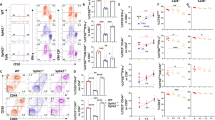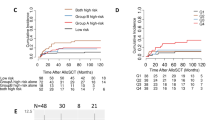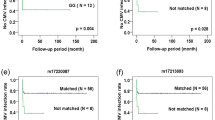Abstract
Toll-like receptor-9 (TLR9) responsive B cells have previously been associated with the onset of extensive chronic graft-versus-host disease (cGvHD). We hypothesized that the onset of cGvHD associated with a higher level of plasma-free mitochondrial DNA (mtDNA), a putative TLR9 agonist. Plasma cell-free mtDNA levels were measured in 39 adult patients post-HSCT with and without cGvHD. mtDNA was isolated from plasma and quantified by Q-PCR amplification. We correlated B cell responsiveness to CpG-DNA, a prototypical TLR9 agonist, and previously identified cGVHD biomarkers with mtDNA levels. Free plasma mtDNA were elevated in patients post-HSCT without cGvHD compared to normal non-HSCT adults. There was a significantly higher level of free plasma mtDNA associated with the onset of cGvHD (3080 ± 1586 versus 1834 ± 1435 copies/μL; p = 0.02) compared to 6 months post-HSCT controls. Free mtDNA levels post-HSCT correlated with B cell responsiveness to CpG-DNA and known cGvHD biomarkers: CXCL10 (p = 0.003), ICAM-1 (p = 0.007), CXCL9 (p = 0.03), sCD25 (p = 0.05) and sBAFF (p = 0.05), and percentage of CD21low B cells. Plasma levels of free mtDNA are increased in cGvHD and may represent an endogenous inflammatory stimulus for TLR9 expressing B cells.
This is a preview of subscription content, access via your institution
Access options
Subscribe to this journal
Receive 12 print issues and online access
269,00 € per year
only 22,42 € per issue
Buy this article
- Purchase on SpringerLink
- Instant access to full article PDF
Prices may be subject to local taxes which are calculated during checkout



Similar content being viewed by others
References
She K, Gilman AL, Aslanian S, Shimizu H, Krailo M, Chen Z, et al. Altered Toll-like receptor-9 responses in circulating B cells at the onset of extensive chronic graft-versus-host disease. Biol Blood Marrow Transplant. 2007;13:386–97.
Sabroe I, Parker LC, Dower SK, Whyte MK. The role of TLR activation in inflammation. J Pathol. 2008;214:126–35.
Todd JL, Palmer SM. Danger signals in regulating the immune response to solid organ transplantation. J Clin Invest. 2017;127:2464–72.
Zhang Q, Raoof M, Chen Y, Sumi Y, Sursal T, Junger W, et al. Circulating mitochondrial DAMPs cause inflammatory responses to injury. Nature. 2010;464:104–7.
Ries M, Schuster P, Thomann S, Donhauser N, Vollmer J, Schmidt B. Identification of novel oligonucleotides from mitochondrial DNA that spontaneously induce plasmacytoid dendritic cell activation. J Leukoc Biol. 2013;94:123–35.
Kariminia A, Holtan SG, Ivison S, Rozmus J, Hebert MJ, Martin PJ, et al. Heterogeneity of chronic graft-versus-host disease biomarkers: the only consistent association is with CXCL10 and CXCR3+NK cells. Blood. 2016;127:3082–91.
Hartman G, Krieg AM. Mechanism and function of a newly identified CpG DNA motif in human primary B cells. J Immunol. 2000;164:944–53.
Cardinal H, Dieudé M, Brassad N, Qi S, Patey N, Soulez, et al. Antiperlecan antibodies are novel accelerators of immune-mediated vascular injury. Am J Transplant. 2013;13:861–74.
Greinix HT, Kuzmina Z, Weigl R, Körmoczi U, Rottal A, Wolff D, et al. CD19+Cd21low B cells and CD4+CD45RA+CD31+T cells correlate with first diagnosis of chronic graft-versus-host disease. Biol Blood Marrow Transplant. 2015;21:250–8.
Kuzmina Z, Krenn K, Petkov V, Körmoczi U, Weigl R, Rottal A, et al. CD19(+)CD21(low) B cells and patients at risk for NIH-defined chronic graft-versus-host disease with bronchiolitis obliterans syndrome. Blood. 2013;121:1886–95.
Krysko DV, Agostinis P, Krysko O, Garg AD, Bachert C, Lambrecht BN, et al. Emerging role of damage-associated molecular patterns derived from mitochondria in inflammation. Trends Immunol. 2011;32:157–64.
McIlroy DJ, Bigland M, White AE, Hardy BM, Lott N, Smith DW, et al. Cell necrosis-independent sustained mitcochondrial and nuclear DNA release following trauma surgery. J Trauma Acute Care Surg. 2015;78:282–8.
Yousefi S, Gold JA, Andina N, Lee JJ, Kelly AM, Kozlowski E, et al. Catapult-like release of mitochondrial DNA by eosinophils contributes to antibacterial defense. Nat Med. 2008;14:949–53.
Brinkmann V, Reichard U, Goosmann C, Fauler B, Uhlemann Y, Weiss DS, et al. Neutrophil extracellular traps kill bacteria. Science. 2004;303:1532–5.
Cromvik J, Johnsson M, Vaht K, Johansson JE, Wenneras C. Eosinophils in the blood of hematopoietic stem cell transplanted patients are activated and have different molecular marker profiles in acute and chronic graft-versus-host disease. Immun Inflamm Dis. 2014;2:99–113.
Boudreau LH, Duchez AC, Cloutier N, Soulet D, Martin N, Bollinger J, et al. Platelets release mitochondria serving as substrate for bactericidal group IIA-secreted phospholipase A2 to promote inflammation. Blood. 2014;124:2173–83.
Murphy GF, Korngold R. Significance of selectively targeted apoptotic rete cells in graft-versus-host disease. Biol Blood Marrow Transplant. 2004;10:357–65.
Murphy GF. Target cells in graft-versus-host disease: implications for cancer therapy. Clin Rev Allergy Immunol. 2007;33:113–23.
Zhan Q, Korngold R, Lezcano C, McKeon F, Murphy GF. Graft-versus-host disease-related cytokine-driven apoptosis depends on p73 in cytokeratin 15-positive target cells. Biol Blood Marrow Transplant. 2012;18:841–51.
Chaturvedi A, Dorward D, Pierce SK. The B cell receptor governs the subcellular ___location of Toll-like receptor-9 leading to hyperresponses to DNA-containing antigens. Immunity. 2008;28:799–809.
Roberta TL, Turner ML, Dunn JA, Lenert P, Ross IL, Sweet MJ, et al. B cells do not take up bacterial DNA: an essential role for antigen in exposure of DNA to toll-like receptor-9. Immunol Cell Biol. 2011;89:517–25.
Sano H, Takai O, Harata N, Yoshinaga K, Kodama-Kamada I, Sasaki T. Binding properties of human anti-DNA antibodies to cloned human DNA fragments. Scand J Immunol. 1989;30:51–63.
Fong T, Trinkaus K, Adkins D, Vij R, Devine SM, Tomasson M, et al. A randomized double-blind trial of hydroxychloroquine for the prevention of chronic graft-versus-host disease after allogeneic peripheral blood stem cell transplantation. Biol Blood Marrow Transplant. 2007;13:1201–6.
Gilman AL, Schultz KR, Goldman FD, Sale GE, Krailo MD, Chen Z, et al. Randomized trial of hydroxychloroquine for newly diagnosed chronic graft-versus-host disease in children: a Chilugdren’s Oncology Group study. Biol Blood Marrow Transplant. 2012;18:84–91.
Lood C, Blanco LP, Purmalek MM, Carmona-Rivera C, De Ravin SS, Smith CK, et al. Neutrophil extracellular traps enriched in oxidized mitochondrial DNA are interferogenic and contribute to lupus-like disease. Nat Med. 2016;22:146–53.
Vollmer J, Jurk M, Samulowitz U, Lipford G, Forsbach A, et al. CpG oligodeoxynucleotides stimulate IFN-gamma-inducible protein-10 production in human B cells. J Endotoxin Res. 2004;10:431–8.
Keller B, Stumpf I, Strohmeier V, Usadel S, Verhoeyen E, Elbel H, Warnatz K. High SYK expression drives constitutive activation of CD21low B cells. J Immunol. 2017;198:4285–92.
Acknowledgements
This project was funded by a Canadian Institutes of Health Operating Grant, and funding from the CIHR/Wyeth Clinical Research Chair in Transplantation (KRS). The Chronic GVHD Consortium (U54CA163438) is part of the Rare Diseases Clinical Research Network (RDCRN), an initiative of the Office of Rare Diseases Research (ORDR), National Center for Advancing Translational Sciences (NCATS). The Chronic GVHD Consortium is funded through collaboration between NCATS and the National Cancer Institute. The Canadian BMT Group Clinical Trials Network provided samples from CBMTG 0601 (funded by NIH/NCI—1R01CA108752-01A2, PI K. Schultz) and samples from CBMTG 0801 study (funded by CIHR, PI—I Walker).
Author information
Authors and Affiliations
Corresponding author
Ethics declarations
Conflict of interest
The authors declare that they have no conflict of interest.
Rights and permissions
About this article
Cite this article
Rozmus, J., Ivison, S., Kariminia, A. et al. Higher levels of free plasma mitochondrial DNA are associated with the onset of chronic GvHD. Bone Marrow Transplant 53, 1263–1269 (2018). https://doi.org/10.1038/s41409-018-0156-y
Received:
Revised:
Accepted:
Published:
Issue Date:
DOI: https://doi.org/10.1038/s41409-018-0156-y
This article is cited by
-
Polymorphisms in CXCR3 ligands predict early CXCL9 recovery and severe chronic GVHD
Blood Cancer Journal (2021)



